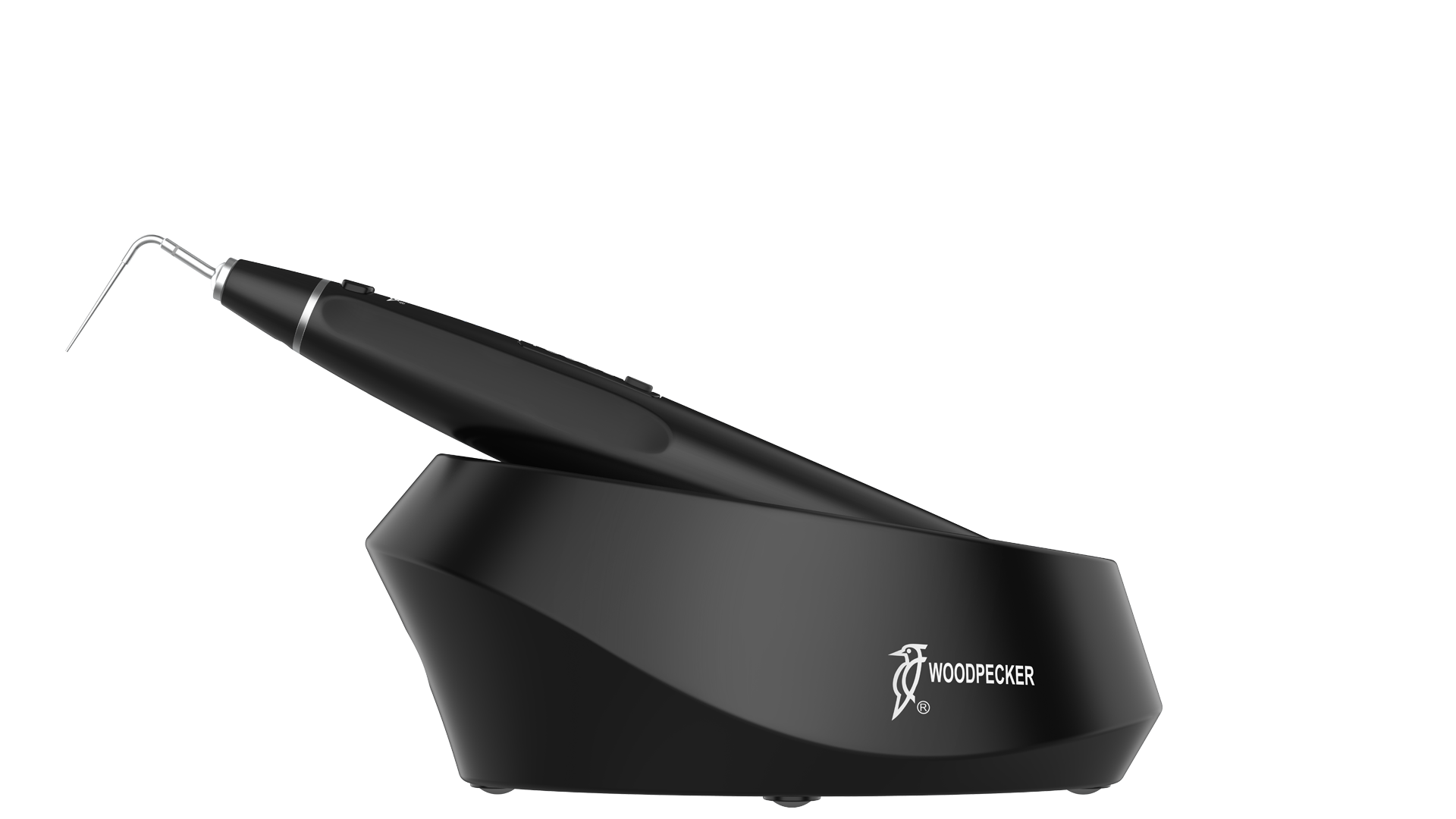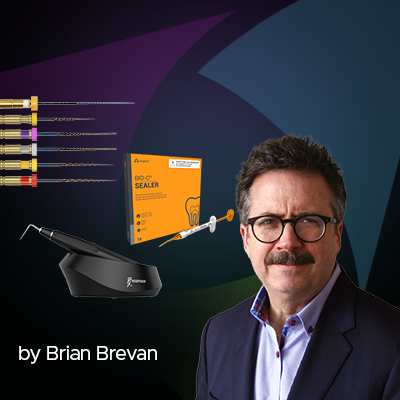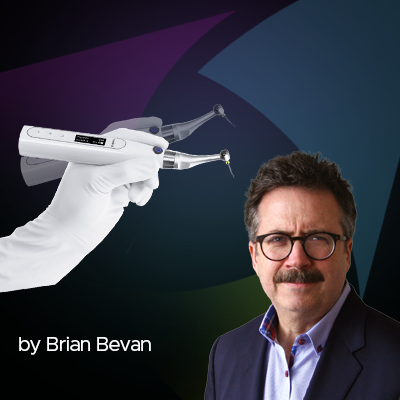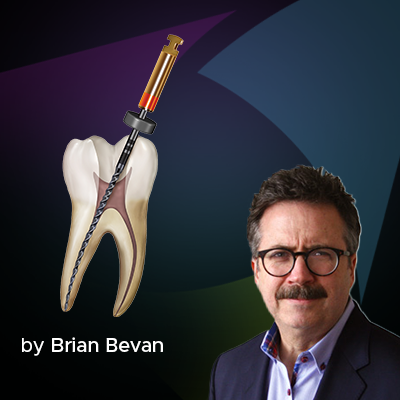
Obturation of the Root Canal – The Evolution in Technique and Materials
Famous innovator James Dyson (inventor of the Dyson vacuums and several other products) said that he is “constantly spotting problems, and plotting how to solve them.” For decades, little changed in endodontic technology, until the advent of NiTi files revolutionized instrumentation. Since then, we have seen an explosion in technology such as CBCT in diagnosis, heat treated files for shaping, new and better irrigants and advanced methods of delivering them, calcium silicate-based sealers, more conservative file shapes, and better endo – restorative strategies.
In each case these technologies involved identifying clinical challenges such as properly disinfecting the canal and leaving more tooth structure intact for a better restorative prognosisI. But as with any product development, new technologies can create new clinical challenges.
A case in point is the development of better irrigation techniques and products. Better irrigation creates an opportunity to save more tooth structure and use more conservative access design and canal instrumentation. Endodontists using advanced irrigation technologies such as Gentle Waveii (Sonendo, Laguna Hills, CA) or the Sweeps technique using SkyPulse laser (Fotona, National Dental, Barrie, ON)iii (FIG 1), now have the ability to finish a case using a file as small as a DC Taper H size 17/.04 (SS White / Clinical Research Dental, London, ON) (FIG 2). General Practitioners using safe double side vented needles (Flexible Steel 30 ga., Transcodent) can irrigate deeper with confidence and are able to shape using a file that has deep shape, like a 25 / .06 taper, but with a smaller coronal maximum flute diameter of 0.8 (Exact Taper H DC, SS White Dental) (FIG 3). The results are a conservative or minimally shaped canal, that has been properly irrigated and disinfected to the apical third.

FIG. 2
FIG. 1

FIG. 3
The challenge created by this desirable change in paradigm is “how do I fill this?” Legacy obturation techniques were usually based on larger funnel shapes created by larger constant or variable tapered NiTi Rotary Instruments, very conducive to warm gutta percha compaction techniques (i.e., with a System B down pack and an
Obtura backfill), or carrier based obturation (Thermafill or GuttaCore) but these must be changed to accommodate the more conservative shapes. Manufacturers have since “plotted to solve” this challenge in two ways.
New Cordless Obturation Devices such as the Fi-P downpack unit and the Fi-G backfill gun (FIG 4A and 4B), have broadened their accessories to accommodate
more conservative shapes. The Fi-P downpack unit as well as the Alpha A2 include smaller heated pluggers, such as a 35/.04. The Fi-G backfill gun has a 0.5 needle.

FIG. 4A

FIG. 4B
Would this solve the challenge of obturating a canal with a more conservative shape? Absolutely! Consider two examples:
1.A clinician using conventional irrigation methods, uses an Exact Taper H DC File sequence (FIG 5) (Exact Taper H DC Sequence). The Finishing file is an F2. This file has a nice apical shape of 25/.06, but has a diminishing taper resulting in a maximum cutting diameter of 0.8 mmiv. That is the best of both worlds, a deep shape where you need it for obturation and irrigation, with a more conservative coronal shape to conserve precious peri-cervical dentin. But, How to obturate? The first step for fitting a GP cone in a more conservative canal shape is to do a final rinse with a 17 or 18% EDTA solution. This is a simple but very important step to make sure the canal is patentv. The Diadent DiaSystem GTP size 25/.04 Gutta Percha point fits this shape beautifully. With this shape the clinician using a warm GP technique could easily downpack using that 35.04 plugger (FIG 4B) 5-7 mm from the working length, then condensing with a BL S Kondenser 35/70 or even 40-80. If a backfill is desired then the Fi-G gun with a 0.5 needle could touch the downpacked material for a seamless backfill. We just need to work a bit smaller.

FIG. 5
2. A second way to fill more conservatively shaped canals 3 – dimensionally, is to use a single cone technique, more accurately described as a sealer-based technique. This technique has become even more viable in recent years due to the advent of Bioceramic calcium silicate-based sealers, such as BIO-C Sealer (Angelus, Londrina, Brazil). (FIG 6) These sealers can fill even narrow or complex canal spaces due to their high flow. Because these sealers are hydrophilic and expand when setting, there is no need to worry about polymerization shrinkage or washing out as with other resin based or ZOE sealers.

FIG. 6
A clinician, perhaps an endodontic specialist using an advanced irrigation method using laser, can now finish with a smaller instrument, i.e., a size 17/.04 DC Taper
H (SS White). This is also a variable taper file, with a maximum flute diameter of 0.49! How do you fill that? By injecting the canal with BIO-C Sealer using a small tip
like the 29 Ga. Navitip (Ultradent, South Jordan, Utah) and then passively fitting an XFine GP cone (Diadent, Vancouver, BC).
This is an extreme example of the single cone technique, but it illustrates that no matter how conservative the shape, we now have the products to effectively obturate. In fact, many former warm gutta percha aficionados are now switching to the simpler, sealer based obturation techniques, regardless of the canal shape, due to the superlative properties of Bioceramic sealers. As the endodontic procedure evolves, created by better ideas, technology adapts, and “plots to solve” with product innovation. As an American musician and composer said “without deviation, progress is not possible.”
REFERENCES
i Impacts of conservative endodontic cavity on root canal instrumentation efficacy and resistance to fracture assessed in incisors, premolars, and molars, Rajesh
Krishan , Frank Paqué , Arezou Ossareh , Anil Kishen , Thuan Dao , Shimon Friedman, J Endod 2014 Aug;40(8):1160-6
ii Outcomes of the GentleWave system on root canal treatment: a narrative review, Hernán Coaguila-Llerena, Restor Dent Endod. 2022 Feb
iii SWEEPS Modality Opens a New Era: Digitally Pulsed Lasers, Endodontics and Deep Disinfection, John A. Cianciola DDS, MSD; Keith W. Brewster DDS; Scott
D. Benjamin DDS, Oral Health Journal 10/11/2022
iv Enddoontics Through the Looking Glass, Dr. Reza Farshey, Oral Health Journal, May 2022
v Last Act With a File, DR. L. Stephen Buchanan, Endodontic Practice US 2024
About the Author

Brian Bevan,
Endodontic Product Manager
Over a lengthy career he has established excellent and enduring relationships with Key Opinion Leaders, Universities and Grad programs, and key dental industry contacts. Brian speaks to general dentists and specialists on an almost daily basis and is considered a valuable resource on the challenges and techniques essential to successful endodontics.
Discover More
This article was originally published in the Clinical Life™ magazine: Winter 2025 edition
Clinical Life™ magazine is a premier periodical publication by Clinical Research Dental Supplies & Services Inc. Discover compelling clinical cases from Canadian and US dental professionals, cutting-edge techniques, product insights, and continuing education events.
Subscribe to our emails to receive articles like this and be notified about our exclusive promotions.




